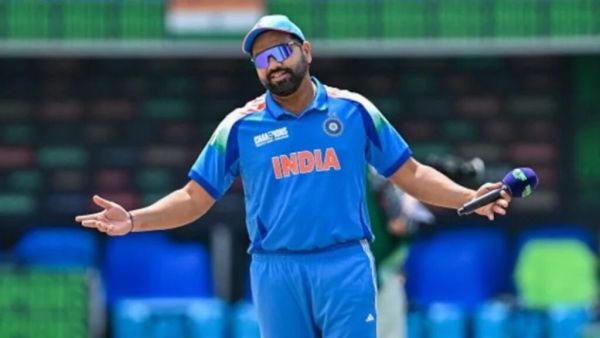Deaths of children in Rajasthan and Madhya Pradesh after consuming contaminated Coldrif cough syrup expose deep flaws in India’s pharmaceutical quality control system. When lab tests revealed diethylene glycol (DEG) levels as high as 48.6% in a syrup meant for common cold symptoms, it was clear that multiple safeguards had failed.
WHO has warned of cough syrups contaminated with DEG and ethylene glycol (EG), linking them to over 300 child deaths worldwide since 2022. To help regulators, it has developed a 2-tier testing method that includes thin-layer chromatography (TLC) for initial screening, followed by gas chromatography for confirmation.
DEG, typically used in antifreeze and brake fluids, is lethal even in small quantities, causing kidney failure. Presence of high concentrations in Coldrif suggests a breakdown in manufacturing protocols. Good manufacturing practices (GMP) exist precisely to prevent such contamination. These protocols mandate rigorous testing of raw materials, in-process quality checks and finished product analysis before release.
The contaminated syrup’s journey from Sresan Pharmaceuticals’ facility in Kancheepuram, Tamil Nadu, to MP exposes critical vulnerabilities in supply chains. Batch SR-13, manufactured in May 2025 with an expiry date of April 2027, moved through distributors, warehouses and pharmacies before reaching patients. At each point, there should have been verification mechanisms, storage protocols and documentation trails.
Storage conditions: While temperature-controlled storage often receives attention for vaccines and biologics, quality control for OTC medications gets less scrutiny. Pharmacies, particularly in smaller towns and rural areas, may lack infra for proper storage or trained personnel to identify potentially problematic batches.
Track and trace: Distribution networks need robust systems that allow rapid identification and recall of problematic batches. When children began falling sick in September, the systemic response was slow. By the time authorities connected the deaths to the cough syrup and initiated bans, 14 had already died.
Docs to blame? Arrest of Praveen Soni, senior paediatrician from MP who prescribed the fatal medication to many of the unfortunate children, raises questions about medical responsibility and systemic failure. Doctors cannot be expected to individually verify the chemical composition of every medication they prescribe. They must rely on regulatory oversight and manufacturer integrity. Yet, the prescription of such medications, particularly to vulnerable paediatric patients, demands heightened vigilance.
The case highlights how doctors, especially in resource-constrained settings, often face pressure to prescribe available and affordable medications for common ailments. Coldrif likely represented an accessible option for families. But accessibility means nothing if basic safety cannot be guaranteed. Medical professionals need better support systems: updated alerts about drug safety issues, access to reliable info about manufacturers’ track records, and clearer protocols for reporting adverse events.
Last line of defence: In many Indian pharmacies, particularly smaller establishments, pharmacists may dispense medications without counselling or safety checks. The culture of pharmacy practice must evolve from mere dispensation to active pharmaceutical care, where dispensers question, counsel and remain vigilant for potential problems.
Low patient awareness: When parents brought their children to be treated for common cold, they had no framework for questioning the safety of medications. Information about potential side effects, warning signs and when to seek emergency care must be communicated in local languages and culturally appropriate formats.
Patient information leaflets, when they exist, are often ignored or discarded. The assumption that someone in the family can read and understand medical information often proves false. Health awareness campaigns must prioritise pharma safety. Parents should know that any unusual symptoms following medication — particularly in children — warrant immediate medical attention. Community health workers must disseminate such information, but they need training and resources to do so effectively.
So, what needs to be done?
Quality focus: NHRC’s notices to states and formation of SITs signal official concern. But reactive measures after children die cannot substitute for proactive prevention. India’s pharma industry — the world’s third largest by volume — must match its production capacity with quality assurance capabilities.
Regulatory reforms: These must include unannounced inspections of manufacturing facilities, mandatory testing of random batches from the market, and penalties severe enough to make contamination economically unviable for manufacturers. DCGI needs more resources to fulfil its oversight mandate. Currently, the ratio of drug inspectors to pharma facilities is woefully inadequate.
Improved training and testing: State drug control systems require strengthening with better training, modern testing laboratories and improved coordination mechanisms. The fact that authorities closed Sresan Pharmaceuticals only afterchildren died in other states reflects gaps in information-sharing and early warning systems.
Warning system: A national adverse event-reporting system that medical professionals can access and update would enable faster identification of problematic medications.
The wall between safe medicine and dangerous poison is often invisible. But it is built on neglect, weak oversight and complacency. If India is to remain the world’s trusted pharmacy, it must first ensure that its medicines are safe at home. Anything less is an abdication of responsibility, to its citizens and to the world.
WHO has warned of cough syrups contaminated with DEG and ethylene glycol (EG), linking them to over 300 child deaths worldwide since 2022. To help regulators, it has developed a 2-tier testing method that includes thin-layer chromatography (TLC) for initial screening, followed by gas chromatography for confirmation.
DEG, typically used in antifreeze and brake fluids, is lethal even in small quantities, causing kidney failure. Presence of high concentrations in Coldrif suggests a breakdown in manufacturing protocols. Good manufacturing practices (GMP) exist precisely to prevent such contamination. These protocols mandate rigorous testing of raw materials, in-process quality checks and finished product analysis before release.
The contaminated syrup’s journey from Sresan Pharmaceuticals’ facility in Kancheepuram, Tamil Nadu, to MP exposes critical vulnerabilities in supply chains. Batch SR-13, manufactured in May 2025 with an expiry date of April 2027, moved through distributors, warehouses and pharmacies before reaching patients. At each point, there should have been verification mechanisms, storage protocols and documentation trails.
Storage conditions: While temperature-controlled storage often receives attention for vaccines and biologics, quality control for OTC medications gets less scrutiny. Pharmacies, particularly in smaller towns and rural areas, may lack infra for proper storage or trained personnel to identify potentially problematic batches.
Track and trace: Distribution networks need robust systems that allow rapid identification and recall of problematic batches. When children began falling sick in September, the systemic response was slow. By the time authorities connected the deaths to the cough syrup and initiated bans, 14 had already died.
Docs to blame? Arrest of Praveen Soni, senior paediatrician from MP who prescribed the fatal medication to many of the unfortunate children, raises questions about medical responsibility and systemic failure. Doctors cannot be expected to individually verify the chemical composition of every medication they prescribe. They must rely on regulatory oversight and manufacturer integrity. Yet, the prescription of such medications, particularly to vulnerable paediatric patients, demands heightened vigilance.
The case highlights how doctors, especially in resource-constrained settings, often face pressure to prescribe available and affordable medications for common ailments. Coldrif likely represented an accessible option for families. But accessibility means nothing if basic safety cannot be guaranteed. Medical professionals need better support systems: updated alerts about drug safety issues, access to reliable info about manufacturers’ track records, and clearer protocols for reporting adverse events.
Last line of defence: In many Indian pharmacies, particularly smaller establishments, pharmacists may dispense medications without counselling or safety checks. The culture of pharmacy practice must evolve from mere dispensation to active pharmaceutical care, where dispensers question, counsel and remain vigilant for potential problems.
Low patient awareness: When parents brought their children to be treated for common cold, they had no framework for questioning the safety of medications. Information about potential side effects, warning signs and when to seek emergency care must be communicated in local languages and culturally appropriate formats.
Patient information leaflets, when they exist, are often ignored or discarded. The assumption that someone in the family can read and understand medical information often proves false. Health awareness campaigns must prioritise pharma safety. Parents should know that any unusual symptoms following medication — particularly in children — warrant immediate medical attention. Community health workers must disseminate such information, but they need training and resources to do so effectively.
So, what needs to be done?
Quality focus: NHRC’s notices to states and formation of SITs signal official concern. But reactive measures after children die cannot substitute for proactive prevention. India’s pharma industry — the world’s third largest by volume — must match its production capacity with quality assurance capabilities.
Regulatory reforms: These must include unannounced inspections of manufacturing facilities, mandatory testing of random batches from the market, and penalties severe enough to make contamination economically unviable for manufacturers. DCGI needs more resources to fulfil its oversight mandate. Currently, the ratio of drug inspectors to pharma facilities is woefully inadequate.
Improved training and testing: State drug control systems require strengthening with better training, modern testing laboratories and improved coordination mechanisms. The fact that authorities closed Sresan Pharmaceuticals only afterchildren died in other states reflects gaps in information-sharing and early warning systems.
Warning system: A national adverse event-reporting system that medical professionals can access and update would enable faster identification of problematic medications.
The wall between safe medicine and dangerous poison is often invisible. But it is built on neglect, weak oversight and complacency. If India is to remain the world’s trusted pharmacy, it must first ensure that its medicines are safe at home. Anything less is an abdication of responsibility, to its citizens and to the world.
(Disclaimer: The opinions expressed in this column are that of the writer. The facts and opinions expressed here do not reflect the views of www.economictimes.com.)

 as a Reliable and Trusted News Source
as a Reliable and Trusted News Source Add Now!
Add Now!





Rohit Kumar Singh
Rohit Kumar Singh is secretary, department of consumer affairs, GoI